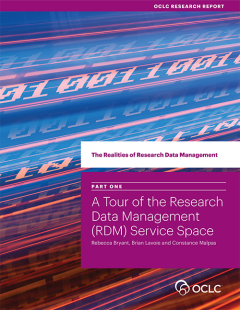The Realities of Research Data Management
The Realities of Research Data Management is a four-part series that explores how research universities are addressing the challenge of managing research data throughout the research lifecycle. In this series, we examine the context, influences, and choices higher education institutions face in building or acquiring RDM capacity—in other words, the infrastructure, services, and other resources needed to support emerging data management practices. Our findings are based on case studies of four institutions: University of Edinburgh (UK), the University of Illinois at Urbana-Champaign (US), Monash University (Australia) and Wageningen University & Research (the Netherlands), in four very different national contexts.
Research data management (RDM) is both a matter of keen interest and an ongoing challenge in higher education. Proliferating data mandates, open science advocacy, replication of published results, and efforts to thwart academic fraud have all focused attention on data management practices during the research process, and long-term data stewardship practices once the research process has ended. This, in turn, has led to the development of services, infrastructure, and other resources to support RDM needs at research universities.
The Realities of Research Data Management is a series of four reports looking at the context, influences, and choices research universities face in building or acquiring RDM capacity. The findings are derived from detailed case studies of four research universities, hailing from four distinct national contexts: the University of Edinburgh (UK), the University of Illinois at Urbana-Champaign (US), Monash University (Australia), and Wageningen University & Research (the Netherlands).
Part One: A Tour of the Research Data Management (RDM) Service Space
In this introductory report, we provide some brief background on the emergence of RDM as a focus for research support services within higher education; present a simple framework for navigating the contours of the RDM service space; describe the methodology we employed for assembling our findings and discuss the key elements of RDM capacity acquisition these findings address; and offer a preview of the next report in the series.
Part Two: Scoping the University RDM Service Bundle
This report explores the nature of the RDM capacity acquired by four research universities in four different national contexts, highlighting key factors that shaped the contours of this capacity, and providing 13 key takeaways that provide useful starting points for institutions as they consider their own RDM services.
Part Three: Incentives for Building University RDM Services
The authors explore the incentives that inspired the acquisition of RDM capacity on the part of the four research universities described in the case studies, and describe both the general patterns and context-dependent circumstances that shaped these incentives.
Part Four: Sourcing and Scaling RDM Services
Another key facet of RDM capacity acquisition is determining where that capacity will be sourced; similarly, the question of scale must be addressed. The final report of the series examines the sourcing and scaling choices made by the four research universities regarding their acquisition of RDM capacity. What variables are being maximized in these decisions: efficiency/cost reduction? Reliability/trust?
Supplemental
In addition to the four-part report, we provide supplemental material including in-depth profiles of each institution's RDM service spaces and a gallery that includes the graphics featured in the reports.
Project staff
Rebecca Bryant
Senior Program Officer
orcid.org/0000-0002-2753-3881
Brian Lavoie
Senior Research Scientist
orcid.org/0000-0002-7173-8753
Constance Malpas
Manager, Strategic Programs
orcid.org/0000-0002-9312-8294
Short URL: oc.lc/realities-RDM
Learn more
Visit our Research Data Management page.



